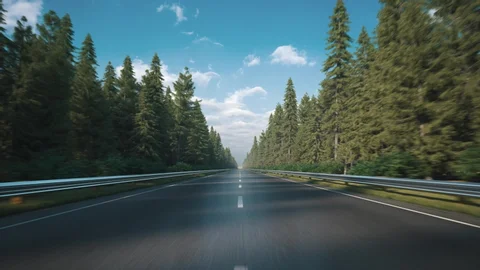Navigating Nature’s Masterpiece: Driving in Norway
Driving through Norway is like embarking on a journey through a painting—every turn of the road unveils stunning landscapes, from majestic fjords to rolling mountains and charming villages. While the idea of driving in a foreign country might seem daunting, Norway offers an exceptionally rewarding experience for those who dare to explore its roads. In this blog, we’ll guide you through the essentials of Driving in Norway, ensuring that your road trip becomes an unforgettable adventure.
- Rules of the Road: Before you hit the road, it’s crucial to familiarize yourself with Norway’s traffic rules. Drive on the right side of the road and overtake on the left. Speed limits vary depending on the road type, so be vigilant about the signs. In residential areas, the speed limit is usually around 30 km/h, while on highways, it’s often 80-100 km/h.
- Scenic Routes and Roads: Norway is renowned for its breathtaking scenic routes, which provide unparalleled views of the country’s natural beauty. The Atlantic Road, Trollstigen, and the Geiranger-Trollstigen National Tourist Route are just a few examples of routes that promise unforgettable driving experiences. These roads wind through awe-inspiring landscapes, offering plenty of opportunities to stop and capture the beauty with your camera.
- Fjords, Ferries, and Tunnels: Norway’s geography is characterized by its fjords and coastal regions. Many roads cross fjords via ferries, adding an extra layer of charm to your journey. It’s recommended to check ferry schedules in advance, especially during peak travel seasons. Additionally, Norway is dotted with numerous tunnels, some of which are toll tunnels. Be prepared with cash or a payment method to cover these fees.
- Weather and Seasonal Considerations: Norwegian weather can be unpredictable, even in the summer months. While road conditions are generally well-maintained, mountain passes might be closed during winter due to heavy snow. If you’re planning a winter road trip, ensure your vehicle is equipped for snow and ice conditions. In summer, be prepared for extended daylight hours, making it easy to lose track of time while exploring.
- Camping and Accommodation: Norway is a paradise for campers, with plenty of designated areas for camping. “Allemannsretten,” or the “everyman’s right,” allows you to camp on uncultivated land for up to 48 hours. For longer stays, consider campgrounds with facilities. If you prefer more traditional accommodations, Norway offers a range of hotels and cabins, but booking in advance is advisable, especially during peak tourist seasons.
- Respecting Nature and Local Communities: Norway’s unspoiled landscapes are a testament to the country’s commitment to environmental preservation. Respect nature by following Leave No Trace principles, and avoid damaging or littering in any way. Additionally, be courteous to local communities, respect their privacy, and adhere to any parking regulations.
